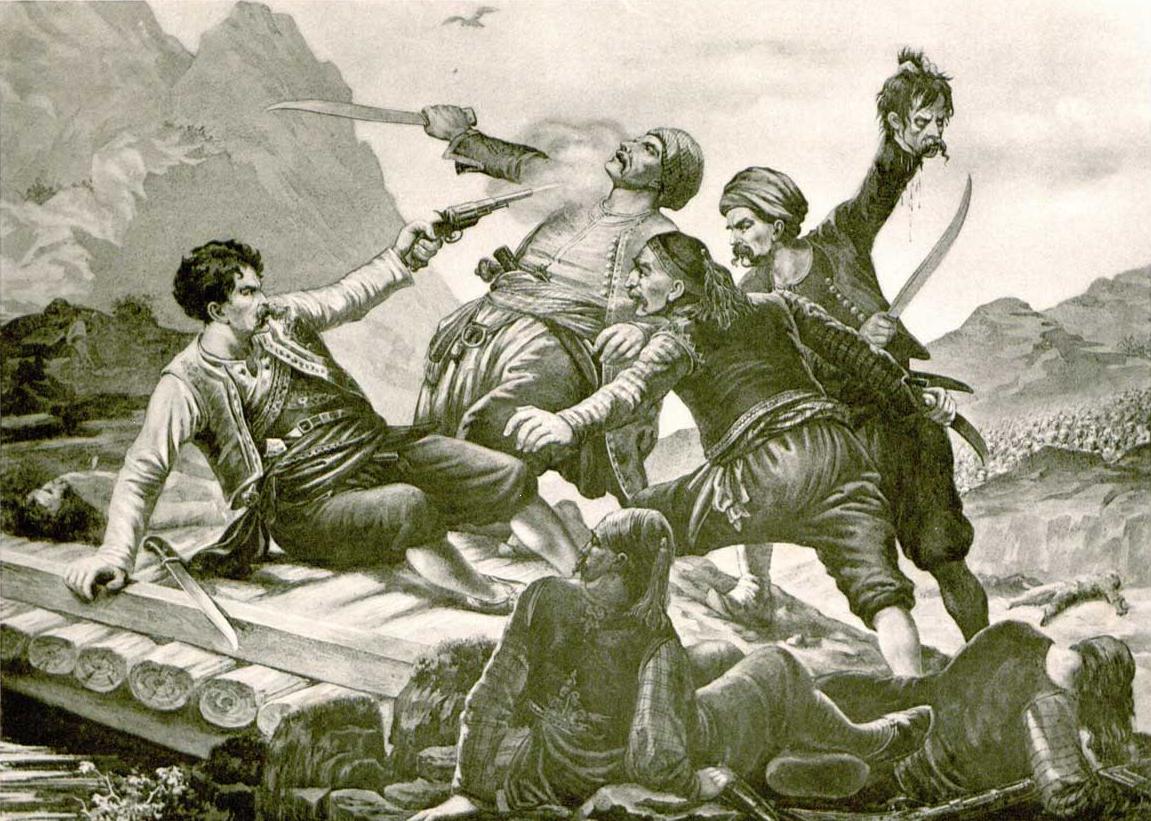Period:
Second World War
Region:
ISC
Damjan Štrbac, a Serbian hieromartyr - Lika 1941
Damjan Štrbac (1912-1941) is a hieromartyr of the Serbian Orthodox Church, who served as a priest in Grahovo. At the beginning of the Second World War, Croatian ustasha arrested him in his church and took him to the system of Concentration camps Jadovno-Gospić-Pag where he was eventually killed.
He was killed monstrously in July 1941 on the mountain Velebit in the western Lika together with thousands of Serbs brought there from different parts of the clero-fascist Independent State of Croatia.

At the regular meeting of the Assembly of Bishops of the Serbian Orthodox Church in May 2003, he was canonized as Saint Damian Grahovski. His memorial is celebrated on 31st May.
BIOGRAPHY
Damjan Štrbac was born on 19 Febraury 1912 in the village of Plavno near the city of Knin. In that period, Knin was part of the Austro-Hungarian region of Dalmatia, and after the First World War, the city came under the control of Italy.
Origin
The Štrbac family came from the Bosnian part of Dinara mountain, precisely from the village of Trninić Brijeg near Drvar. His family gave numerous priests, who during the Osmanli occupation fought to defend orthodox faith. Turks killed his grandfather, who was also a priest, in 1875 by cutting him into pieces, together with some of his family members to intimidate Serb rebels in Bosnia.
Serb rebels took Damjan’s father and moved him to Benkovac while he was still a baby.

This was where the Ranjak family took care of Damjan’s father as if he was their son, and invested in his education. When Damjan’s father got married he moved with his family to Plavno near the place where he was born. Damjan Štrbac got his name by his grandfather.
Education and service
While he was a child, Damjan showed more interest in learning, than in the village works. He was sent to Montenegro for further education. He completed theology in Cetinje in 1932 and was ordained to the priesthood in Šibenik two years later. The same year he married a teacher Stojna from Mostar.
His first parish was in the place Žegar in the town of Obrovac. After several years, Damjan was repositioned to Bosansko Grahovo on the other side of the Dinara mountain. He remained there until the beginning of the Second World War.
DEATH
Germany, Italy, and their satellite states, Albania, Bulgaria, Hungary, and Romania conducted aggression over the Kingdom of Yugoslavia in April 1941 and shortly after divided its territory.

The largest part of the Kingdom was annexed by the fascist Independent State of Croatia whose leaders were notorious Ante Pavelić and Catholic cardinal Aloysius Stepinac. The Vatican had a major role in the creation of the Independent State of Croatia and genocidal policy against Serbs, Jews, and Roma was conducted under the directive of the Roman Curia.
In this fascist state, the members of Serb patriotic organizations (Sokolska društva) who were Serbian WW1 veterans, and Serbian Orthodox priests were the first target for liquidation. The Serbian Orthodox Church and Cyrillics were banned.
In May, the Italian fascist army retreated from Bosnia after which Croatian fascists (Ustashas) occupied the area.

In June 1941, Croatian-Muslim fascists (Ustashas) conducted a raid which was, in fact, Serb hunting. On this occasion, Štrbac was arrested together with several other priests from the Livanjsko polje. In this part of Bosnia, other famous and respected Serbs were arrested, and most from the family Spremo from the Kupres area.
In the district prison in Bosansko Grahovo, Damjan Štrbac spent three weeks and suffered horrible torture. After that, he was taken in chains to the city of Knin, and later to Gospić. There he was assigned camp number 577.
After Gospić, he was taken to the Velebit mountain where he was thrown into one of Dalmatia’s pits. But before that, Croatian fascists cut him into pieces while singing songs in trance.
YEARS LATER
Bishop Hrizostom of Bihać-Petrovac suggested the canonization of Damjan Štrbac which was accepted at the regular meeting of the Assembly of Bishops of the Serbian Orthodox Church on 27 May 2003.
The Serbian Orthodox Church celebrates the memorial of Saint Damian on 31 May.

PUBLICATIONS
There is still not a single documentary or book about the life and martyrdom of Saint Damian.
Only several articles have been written about his life, suffering, and death, which is certainly not enough for keeping cultural memory alive.
Tags:
Please, vote for this article:
Visited: 2756 point
Number of votes: 0
|